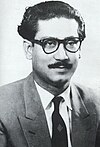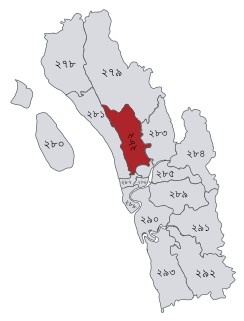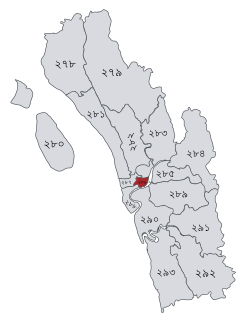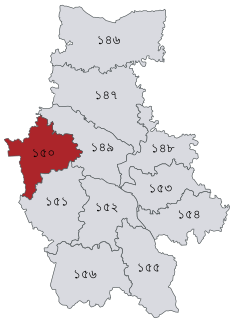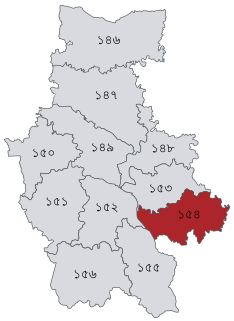| |||||||||||||||||||||||||||||||||||||||||
All 300 seats in the Jatiyo Sangshad 151 seats were needed for a majority | |||||||||||||||||||||||||||||||||||||||||
| |||||||||||||||||||||||||||||||||||||||||
| |||||||||||||||||||||||||||||||||||||||||
 |
|---|
| This article is part of a series on the politics and government of Bangladesh |
Constitution and law |
General elections (Bengali : প্রথম জাতীয় সংসদ নির্বাচন ১৯৭৩) were held in newly independent Bangladesh on 7 March 1973. The result was a victory for the Bangladesh Awami League, who won 293 of the 300 seats, including eleven constituencies where they were elected unopposed without a vote. [1] Voter turnout was 54.9%.

Bengali, also known by its endonym Bangla, is an Indo-Aryan language primarily spoken by the Bengalis in South Asia. It is the official and most widely spoken language of Bangladesh and second most widely spoken of the 22 scheduled languages of India, behind Hindi.

Bangladesh, officially the People's Republic of Bangladesh, is a country in South Asia. It shares land borders with India and Myanmar (Burma). The country's maritime territory in the Bay of Bengal is roughly equal to the size of its land area. Bangladesh is the world's eighth most populous country as well as its most densely-populated, to the exclusion of small island nations and city-states. Dhaka is its capital and largest city, followed by Chittagong, which has the country's largest port. Bangladesh forms the largest and easternmost part of the Bengal region. Bangladeshis include people from a range of ethnic groups and religions. Bengalis, who speak the official Bengali language, make up 98% of the population. The politically dominant Bengali Muslims make the nation the world's third largest Muslim-majority country. Islam is the official religion of Bangladesh.
